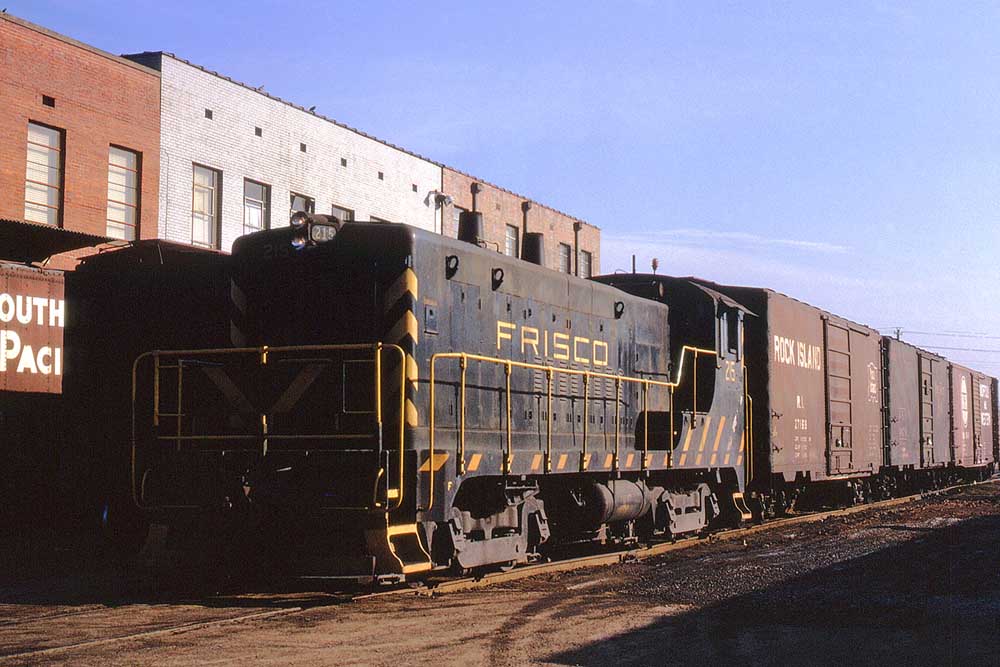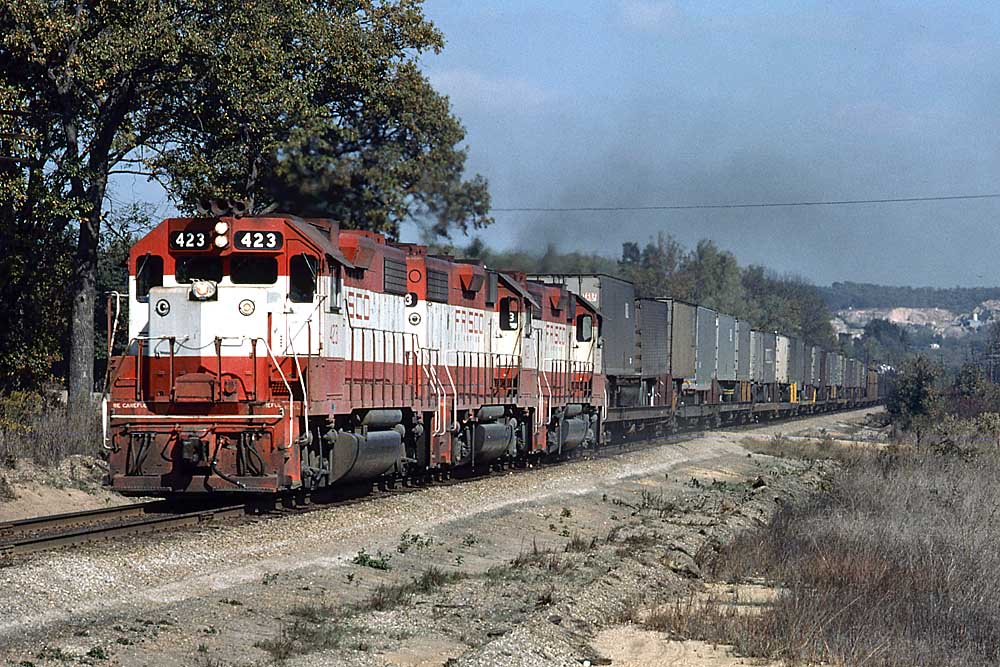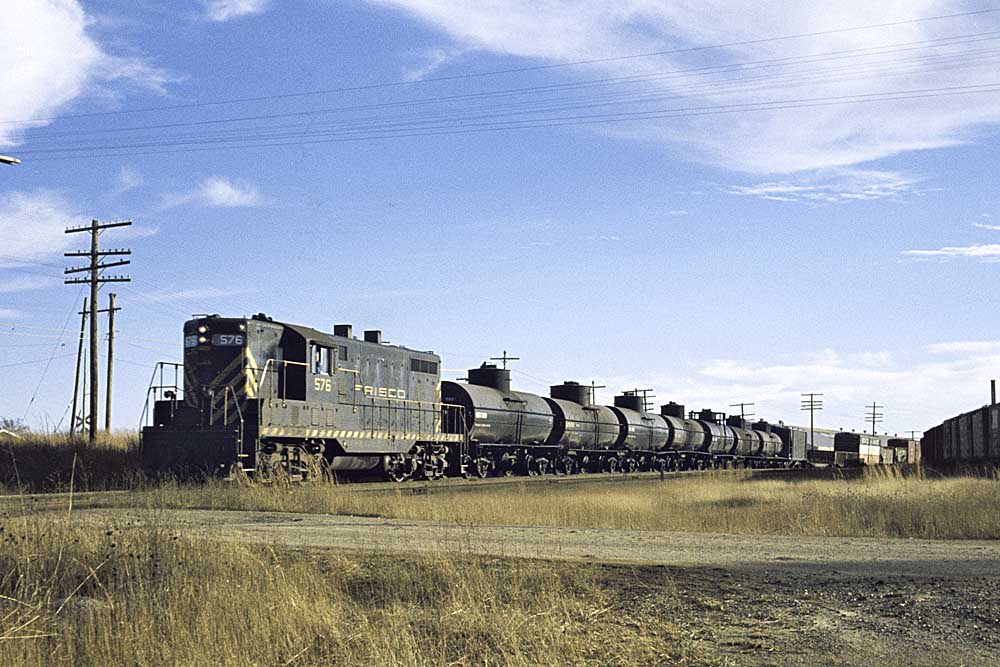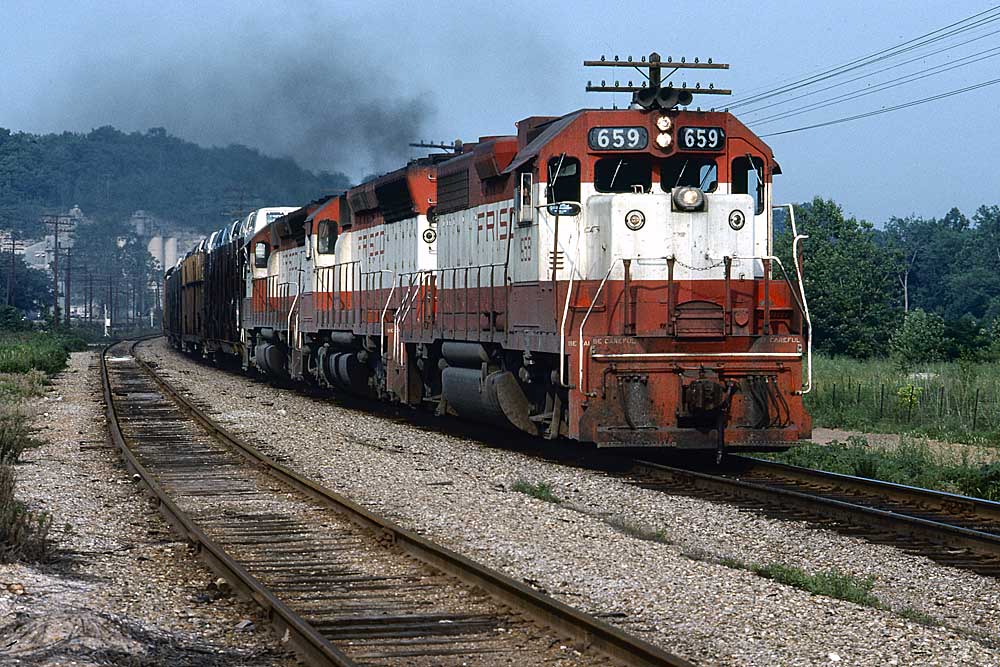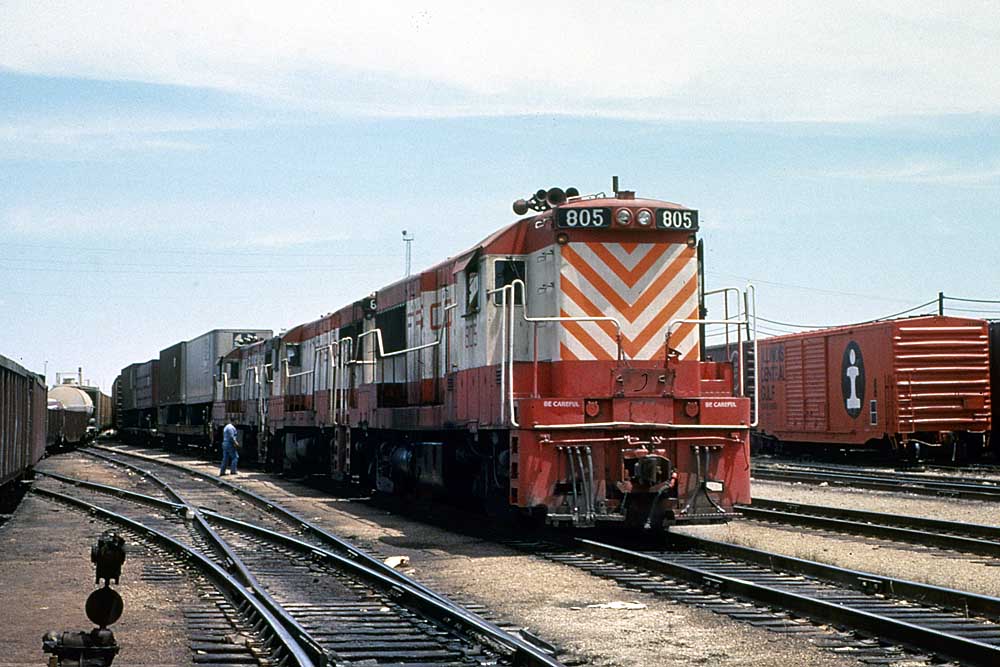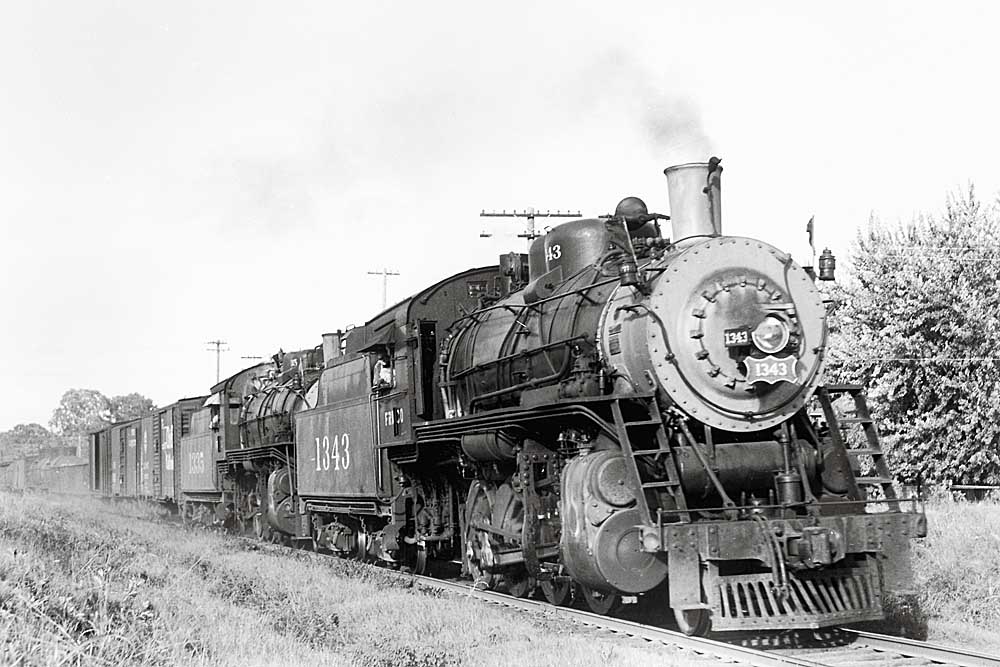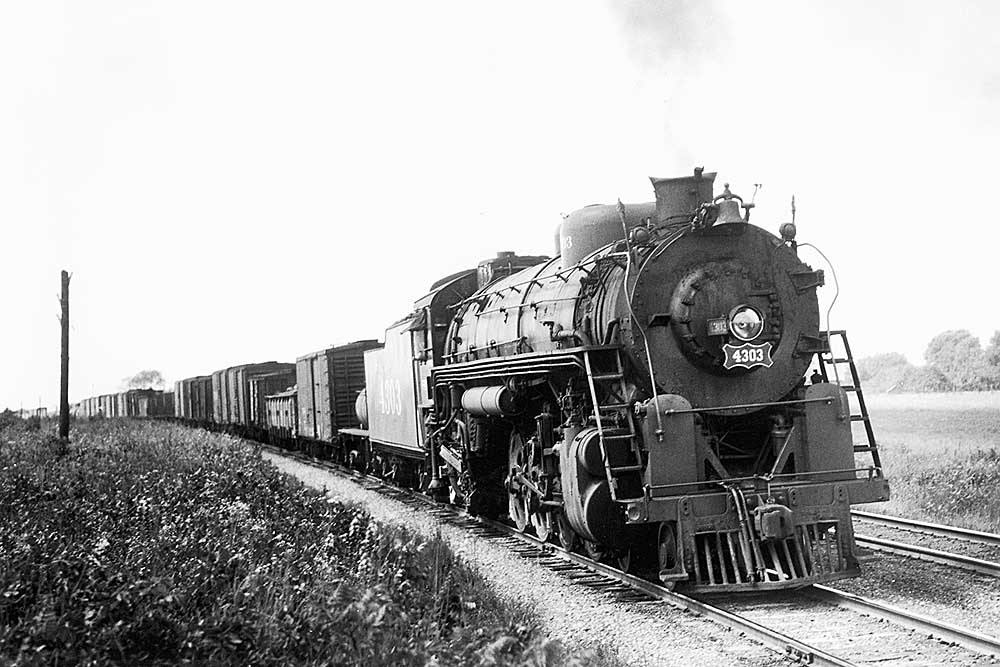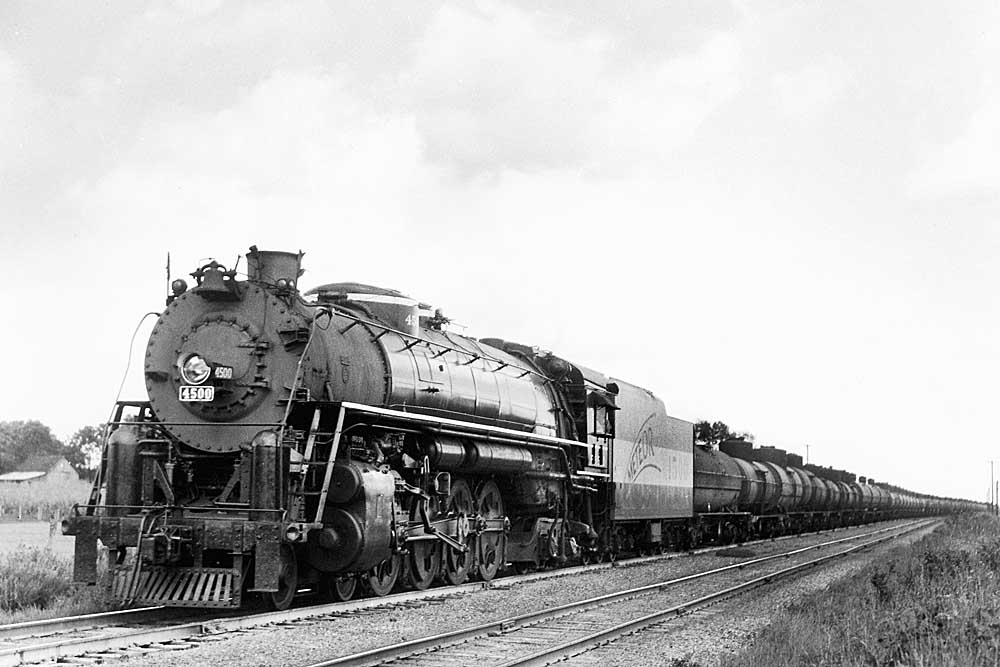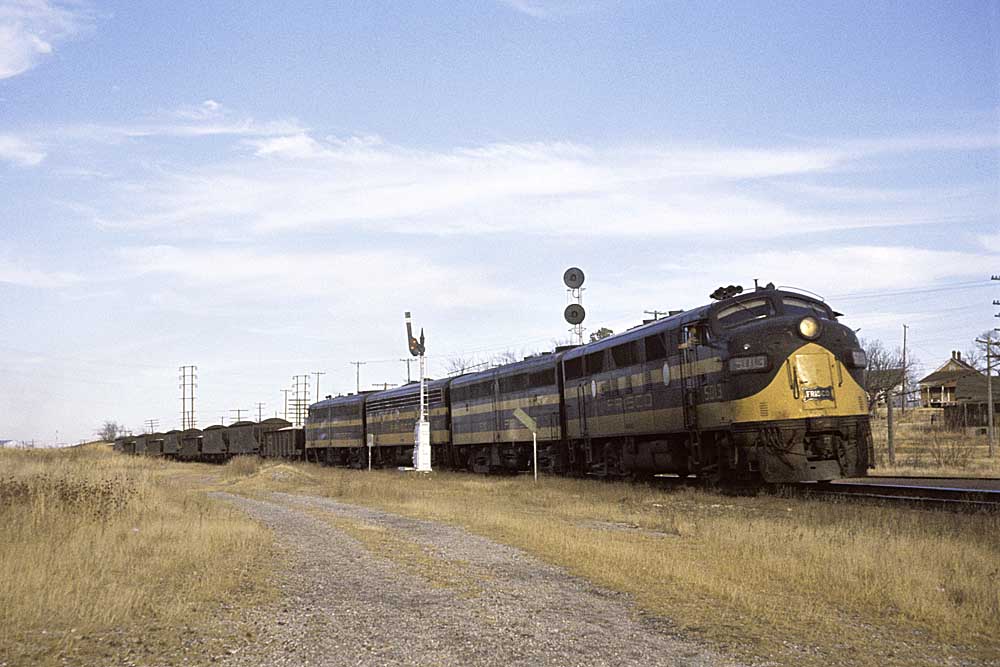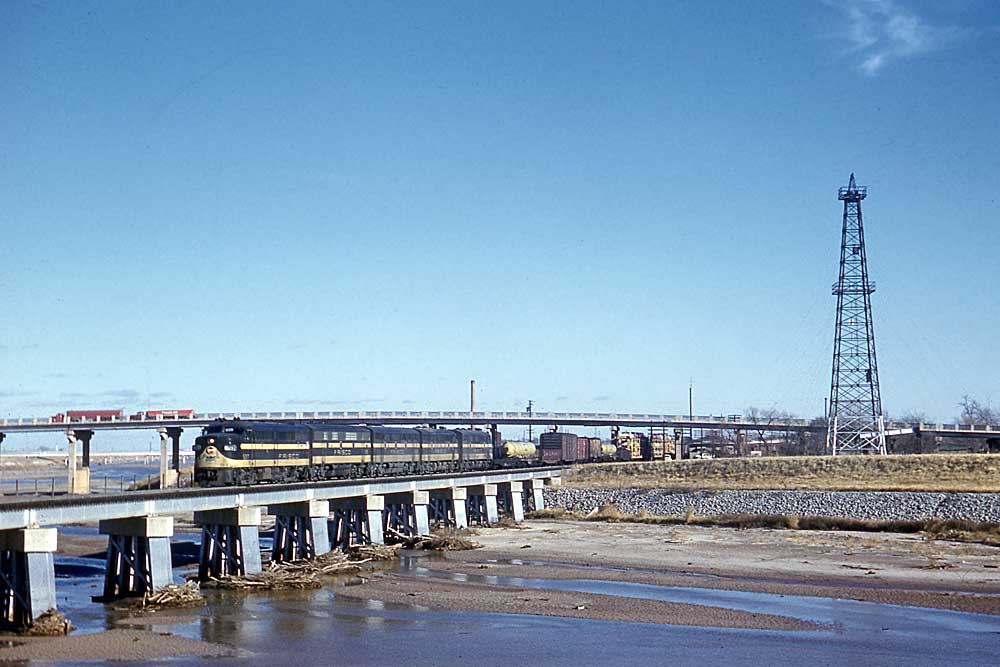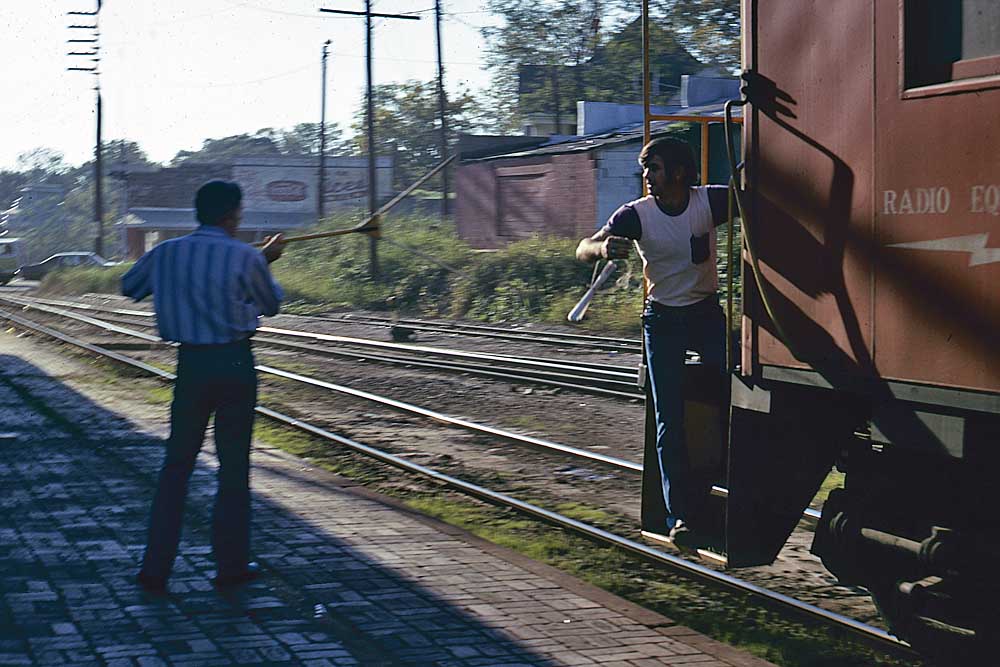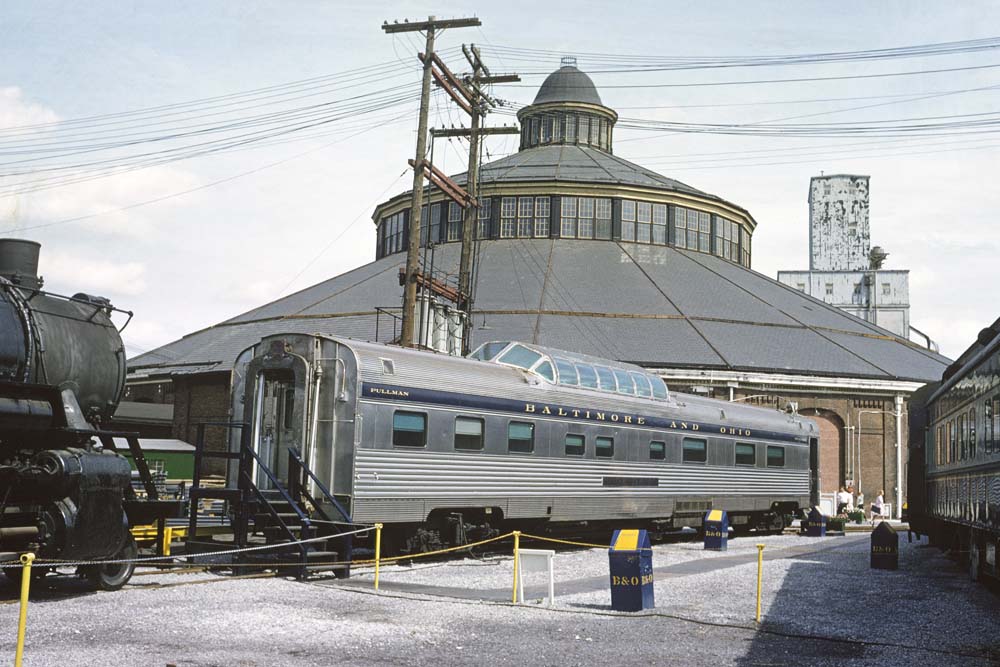The Frisco is Classic Trains’ Railroad of the Month for May 2022
Frisco freight trains: Classic Trains editors are celebrating the history and heritage of the St. Louis-San Francisco Railroad all through May 2022. Please enjoy this photo gallery of Frisco freight trains selected from the archives of Kalmbach Media’s David P. Morgan Library.

Frisco Baldwin VO-1000 No. 215, built in 1943 and re-engined with a 12-cylinder 567C by EMD in 1959, switches on SLSF’s Birmingham (Ala.) Belt subsidiary north of downtown in February 1966. J. David Ingles photo


Westbound Frisco freight train No. 39 with GP38-2 No. 423 on the point heads west 1 mile west of the Pacific, Mo., depot on Oct. 16, 1976. The trailers loaded on flatcar are examples of how the traffic was handled at the time. Paul H. Dalman photo


A Cherokee-bound local departs Sapulpa, Okla., behind GP7 No. 576 in December 1960. The mix of freight cars visible includes seven tank cars and a covered hopper, flat car, gondola, box car, two open hoppers, and another boxcar. J. David Ingles photo


EMD GP38 No. 659 leads a westbound Frisco freight train just east of the Pacific, Mo., depot on June 5, 1976. At this time, new vehicles were handled in open bi- and tri-level auto racks. Later, vandalism problems would force railroads to enclose such loads. Paul H. Dalman photo


One of eight Frisco high-nose U25Bs, No. 805 leads a train west from Lindenwood Yard in southwest St. Louis in June 1974. Gregory J. Sommers photo, Louis A. Marre collection


Doubleheaded 2-8-0s Nos. 1343 and 1335 head for Fort Smith, Ark., with a Frisco freight train in 1944. Robert F. Collins photograph


Frisco 2-8-2 Mikado No. 4303 leads first 32. On this 1944 day the train ran in three sections. Robert F. Collins photo


On second 33, a “true vision”— fancy 4-8-4 No. 4500 with “Meteor” on its tender to promote the road’s passenger service. The train is seemingly made up entirely of tank cars. Robert F. Collins photo


At Sapulpa, Okla., out from Cherokee Yard comes train 31 for Oklahoma City, led by F3 No. 5013 and EMD/Alco cab units in December 1960. Note the use of both searchlight and semaphore signals. J. David Ingles photo


Rebuilt FA1 No. 5217 leads a Texas-bound Frisco freight train across the Oklahoma River in the Sooner State capital in December 1960. J. David Ingles photo


A station agent with a train order fork holds out train orders for a Frisco freight train. This was part of timetable and train order operation common on North American railroads throughout the early- and mid-20th century. Mike Condren photo

At its heart, the Frisco was a regional Class I railroad, an X-shaped system with lines from St. Louis through Oklahoma to Texas, including the Quanah, Acme & Pacific, the west Texas tail of the core system, and from Kansas City, Mo., to Birmingham, Ala., and Pensacola, Fla. In 1966, the Burlington Route purchased a sizable block of Frisco stock. For about a decade, there was no further substantive news of a Frisco merger, but in 1977 successor Burlington Northern and Frisco began discussions which led to merger on Nov. 21, 1980.
Frisco’s main line southwest from St. Louis started climbing right at the yard limits, crossing a watershed into the valley of the Meramec River. Down through the Ozarks it followed the top of a ridge much of the way, but it was hill-and-dale running. The Kansas City-Memphis route similarly sliced through the mountains. The outer reaches of the system across the plains of Oklahoma and Texas were easier going.
Remembering the Frisco, at Trains.com!





